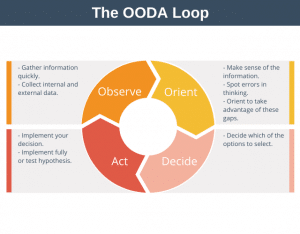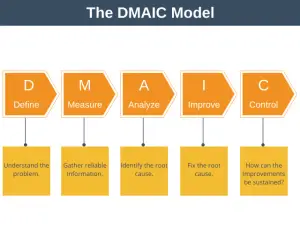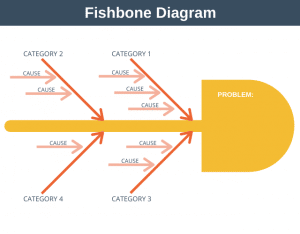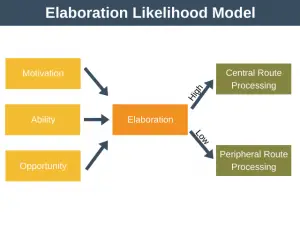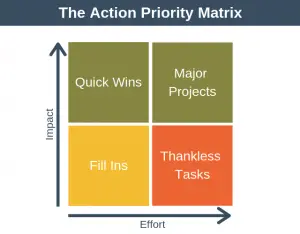Force Field Analysis is an easy-to-use tool that can help improve the quality of your decision-making. If you’re leading change, it’s a great tool to minimize the resistance to change that your team experiences.
Force Field Analysis was developed by Kurt Lewin (1890 – 1947), a German-American psychologist in the 1940s. Lewin originally applied the model to social psychology, but it is frequently used today to help organizations make strategic decisions.
The model can also be used to explain the logic behind why a decision has been taken or not taken.
Force Field Analysis
Force Field Analysis works on the basis that when we consider any decision, there will be forces in favor and forces against making that decision.
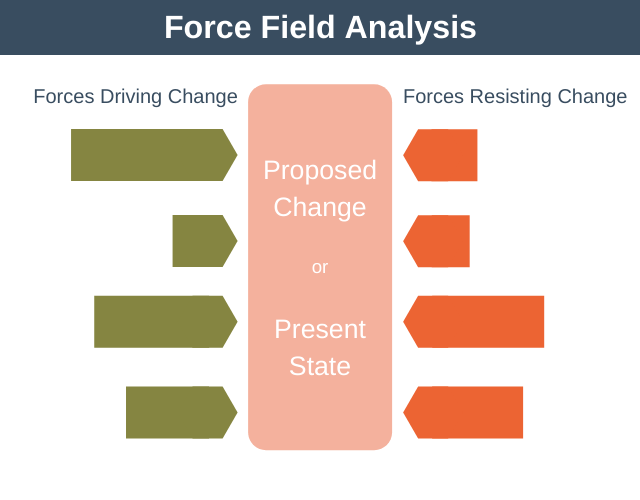
The forces in favor of making the decision or change push against the forces resisting change.
So all the model is saying is are the forces on the left of the diagram (those driving for change) should be stronger than those on the right of the diagram (those resisting change) if you want a change to be successful. When using Force Field Analysis, you score all forces to see if the driving forces outweigh the resisting forces. When you do this, three possible scenarios can exist:
1. The sum of driving forces is equal to the sum of resisting forces.
In this scenario, an equilibrium will exist because you have a balance of counteracting forces. In this situation, change will not be possible, and the status quo will remain. The challenge for management in this scenario is to upset the equilibrium by increasing the driving forces and decreasing the resisting forces to make the change they want to see happen more likely to succeed.
2. The sum of driving forces is less than the sum of resisting forces.
Successful change will not be possible in this scenario because the forces resistant to change are stronger than those in favor of change.
3. The sum of driving forces is greater than the sum of the resisting forces.
In this scenario, change is possible because the forces in favor of change are stronger than those resisting change.
Note that the use of the word “forces” is deliberate. A Force Field Analysis isn’t an exercise in simply listing the quantifiable facts for and against a change. It’s also about understanding your team’s attitudes to change. What emotions might people be experiencing that cause them to resist the change?
You can use Force Field Analysis in one of two ways:
- You can use it to help you determine whether to move forward with a decision or not.
- If you’re managing organizational change, it can help you to see what might be causing people within your team to resist change. To make your change initiative more likely to succeed, you can then take steps to increase driving forces and decrease the restraining forces. In this way, your team is more likely to support the change.
Lewin’s 3-Step Model”
A Force Field Analysis is often used in conjunction with the first step of Lewin’s 3-Step Model, also known as the Unfreeze, Change, Refreeze model.
The first step of this model is to prepare and motivate your team to want to change before the process of implementing the change begins.
Using a Force Field Analysis during this step of Lewin’s 3-Step Model can help you create stronger and more compelling reasons for people to embrace the proposed change.
What Causes Resistance to Change?
If you’re responsible for leading change within your organization, then it can be helpful to understand why people resist change. First off, it is important to realize that resistance to change is normal because, by its very nature, change is stressful and disruptive.
Some of the main reasons people resist change are:
- They perceive a threat from the change, such as potentially losing their job.
- Inertia means they’d rather keep things the same.
- They disagree with your assessment of why the change needs to happen.
- There is a fundamental misunderstanding about the position of the business, perhaps due to a lack of communication.
Force Field Analysis Example
Before we jump in and walk through the steps to perform your own Force Field Analysis, it can be helpful to look at a Force Field Analysis example so you can get a good understanding of what you’re trying to end up with once your analysis is complete.
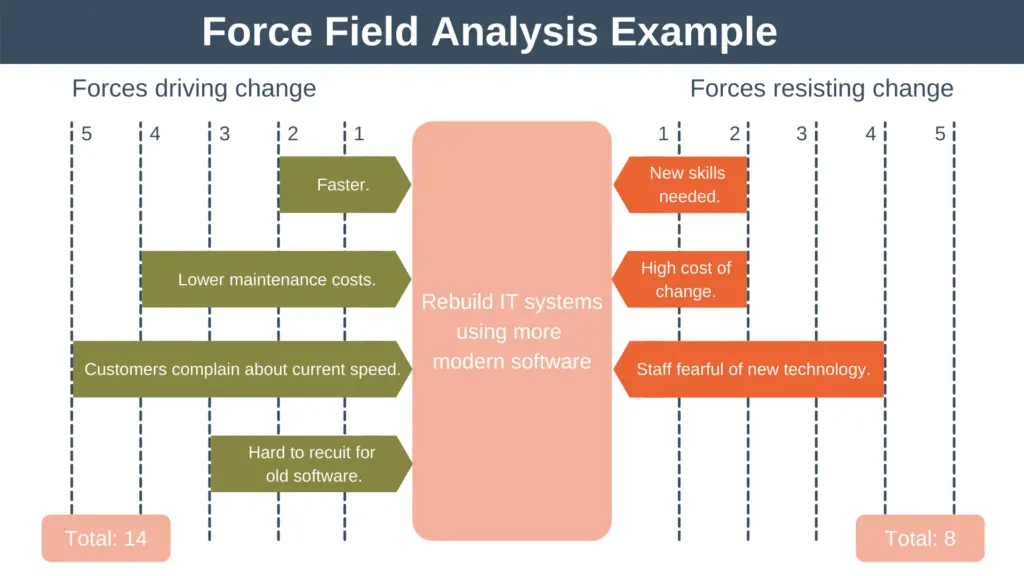
Using Force Field Analysis in Practice
By now, you should have a good understanding of why a Force Field Analysis can be useful. But how do you actually go about performing one in practice?
To perform your own Force Field Analysis, all you’ll need is a blank sheet of paper or a whiteboard and to follow the steps below. To achieve a high-quality outcome from your analysis, it can be helpful to perform the analysis as a group exercise with key stakeholders.
1. Define your goal or vision of the future.
The first step of Force Field Analysis is to define the future state you want to achieve. Alternatively, you can write down the present state or situation if you’d like to understand the current forces at play.
2. Brainstorm the forces driving change.
Brainstorm the forces that are favorable to driving change. These forces can be internal or external.
Internal driving forces might include:
- A desire to increase revenue, profit, or market share.
- A drive to change the organizational culture.
- A drive to integrate a newly acquired organization.
External driving forces might include:
- Customers are demanding certain products, features, or services.
- New legislation.
- New competitors or products make your current offerings outdated.
3. Brainstorm the forces resisting change.
Brainstorm the forces that are resisting change. Again, these forces can be internal or external.
Internal resisting forces might include:
- Certain staff are reluctant to relinquish power.
- The team is fearful they may lose their jobs.
- The team thinks that the current way of doing things is “good enough” and doesn’t see the benefit of changing.
External resisting forces might include:
- Existing contracts with partners or suppliers would be invalidated.
- The response of existing customers may be negative.
- Current government legislation means extra hoops to jump through.
4. Assign scores.
Now that you’ve identified all the forces, the next step is to assign a score to each force. Typically, you score each force from one to five, with one meaning the force is very weak and five meaning the force is very strong.
Once each individual force has a score, you need to tally all the driving forces and separately all the resisting forces to understand the total driving and total resisting force.
You can interpret your total scores as follows:
- If driving forces total more than resisting forces, then change is possible. The more significant the gap between the two values, the easier it will be to get your team on board with the change.
- If driving forces total less than resisting forces, then change is not possible. The bigger the gap between the two values, the harder it will be to make the change happen.
- If driving forces total the same as resisting forces, then an equilibrium exists, and change will not be possible.
5. Make adjustments and apply.
This step represents the key strength of the model – it ensures that:
- You are crystal clear that the change is the right thing to do.
- You can explain the reasons for the change in the manner most likely to get your team to support the proposed change.
In this step, your task is to try and increase your rating of each of the driving forces and reduce your rating of each of the resisting forces.
Sometimes this won’t be something you can do in the brainstorming session, and you will need to draw up an action plan to make this happen.
For example, suppose your team was fearful of using new technology (rating: 5). You could draw up a plan to train your team to use the latest technology to help them realize that the new technology makes their roles more interesting and varied. You estimate that this would reduce the rating for this resisting down from 5 to 2.
Force Field Analysis Template
You can download our Force Field Analysis template here (shown below) to perform your own analysis.

Advantages and Disadvantages
There are several advantages and disadvantages associated with the Force Field Analysis framework.
Advantages
- It provides an easy-to-understand visual summary of the forces for and against a change.
- The model encourages you to consider non-quantitative data as part of your analysis, such as how your team feels about the proposed change.
- By taking the time to maximize driving forces and minimize resisting forces, the model allows you to present your decision in the best possible light to your team. This makes it more likely that they’ll support the change and more likely that the change will be successful.
Disadvantages
- The output from a Force Field Analysis is only as good as the quality of the inputs that go into it. If key people are excluded from the analysis, then the result of the analysis is likely to be inaccurate.
- Substantial differences of opinion may emerge during your Force Field Analysis brainstorming session. The model provides no guidance as to how to proceed when this happens.
Summary
Force Field Analysis is an easy-to-use tool, created by Kurt Lewin, that can help improve the quality of your decision-making and improve your chances of leading successful change.
The power of Force Field Analysis is that it gives you a mechanism to think about and then reduce the resistance to change that people within your organization might experience.


